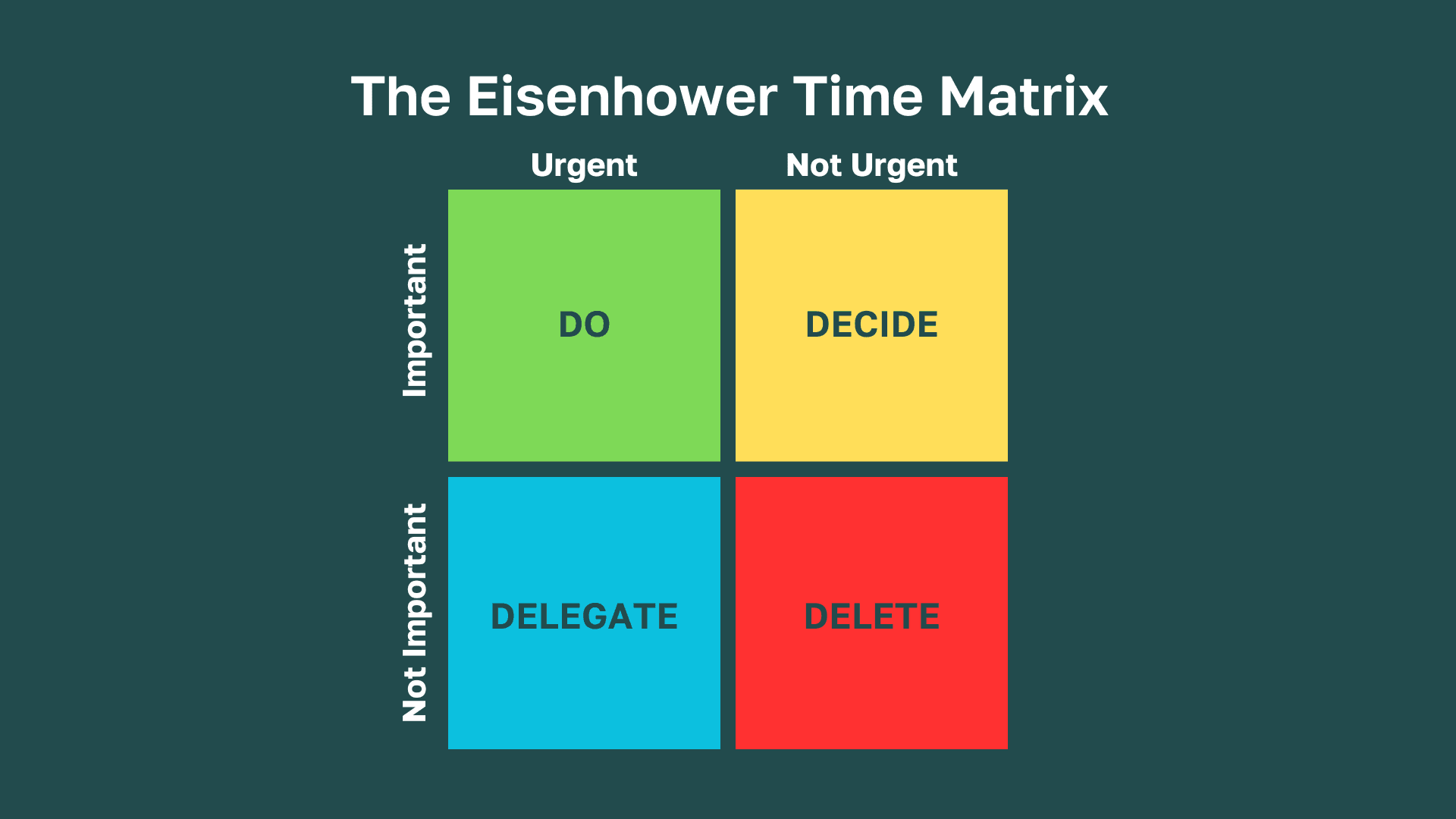

In today’s fast-paced work environment, managing tasks effectively is crucial for achieving success and maintaining a healthy work-life balance. One powerful tool that can help you prioritize your tasks and boost productivity is the Eisenhower Matrix. Let’s explore this topic in more detail with Ping Pong Go below. This article will delve into the intricacies of the Eisenhower Matrix, providing you with valuable insights on how to implement this method in your daily routine and maximize your productivity at work.
The Eisenhower Matrix, also known as the Urgent-Important Matrix or the Priority Matrix, is a simple yet effective tool for prioritizing tasks based on their urgency and importance. Named after Dwight D. Eisenhower, the 34th President of the United States, this method helps individuals make quick decisions about which tasks to focus on and which ones to delegate or eliminate.
The matrix consists of four quadrants, each representing a different combination of urgency and importance:
1. Urgent and Important (Do First): These are tasks that require immediate attention and have significant consequences if not completed. Examples include responding to critical emails, meeting deadlines, or handling emergencies.
2. Important but Not Urgent (Schedule): These tasks are crucial for long-term success but don’t have an immediate deadline. They include strategic planning, personal development, and relationship building.
3. Urgent but Not Important (Delegate): These tasks are time-sensitive but don’t contribute significantly to your goals. They can often be delegated to others or automated. Examples include answering non-critical phone calls or attending certain meetings.
4. Neither Urgent nor Important (Eliminate): These tasks are often distractions or time-wasters that don’t contribute to your goals or success. They should be minimized or eliminated whenever possible.
By categorizing your tasks into these four quadrants, you can gain a clearer perspective on where to focus your time and energy, ultimately leading to improved productivity and reduced stress.
Read more: Master Time Management with the 80/20 Rule (Pareto Principle)
Now that we understand the basic structure of the Eisenhower Matrix, let’s explore how to implement this powerful tool in your daily work routine:
Begin by creating a comprehensive list of all the tasks you need to accomplish. Include both personal and professional responsibilities to get a complete picture of your workload. Don’t worry about prioritizing them at this stage; simply jot down everything that comes to mind.
For each task on your list, ask yourself two critical questions:
1. Is this task urgent? Does it require immediate attention or have a pressing deadline?
2. Is this task important? Does it contribute significantly to your long-term goals or have meaningful consequences?
Be honest with yourself when answering these questions. It’s easy to fall into the trap of considering everything urgent or important, but true prioritization requires a discerning eye.
Based on your assessment, place each task into one of the four quadrants of the Eisenhower Matrix. You can do this mentally, on paper, or using a digital tool. Many productivity apps now offer templates for the Eisenhower Matrix, making it easy to categorize and track your tasks digitally.
Once you’ve categorized your tasks, it’s time to take action based on their placement in the matrix:
1. Do First (Urgent and Important): Focus on these tasks immediately. They should be your top priority and receive your full attention.
2. Schedule (Important but Not Urgent): Block out time in your calendar to work on these tasks. They are crucial for your long-term success, so make sure they don’t get overshadowed by urgent matters.
3. Delegate (Urgent but Not Important): Identify team members or tools that can handle these tasks. Learn to let go of tasks that don’t require your personal attention.
4. Eliminate (Neither Urgent nor Important): Be ruthless in cutting out these tasks. If they truly add no value, consider removing them from your list entirely.
Regularly review your matrix and adjust your tasks as needed. Priorities can shift, and new tasks will inevitably arise. Make it a habit to reassess your matrix at the start of each day or week to ensure you’re always focusing on what matters most.
While the basic implementation of the Eisenhower Matrix can significantly improve your productivity, there are several strategies you can employ to maximize its benefits:
When you come across a task that can be completed in two minutes or less, do it immediately rather than adding it to your matrix. This principle, popularized by productivity expert David Allen, helps prevent small tasks from cluttering your matrix and weighing on your mind.
Once you’ve identified your important but not urgent tasks, use time-blocking to ensure they receive the attention they deserve. Allocate specific time slots in your calendar for these tasks, treating them with the same respect you would give to a critical meeting or deadline.
Take advantage of productivity apps and tools that incorporate the Eisenhower Matrix. Many task management apps now offer built-in matrix features, allowing you to categorize and prioritize your tasks digitally. This can be especially helpful for teams working remotely or managing complex projects.
As you become more adept at using the Eisenhower Matrix, you’ll likely identify many tasks that fall into the “eliminate” quadrant. Learn to say no to these tasks confidently. Remember, every “yes” to a low-priority task is a “no” to something more important.
The Eisenhower Matrix can be even more powerful when combined with other productivity techniques. For example, you might use the Pomodoro Technique to tackle your “Do First” tasks, or apply the Getting Things Done (GTD) method to manage your “Schedule” quadrant more effectively.
Read more: How to Use the Pomodoro Technique to Stay Focused
While the Eisenhower Matrix is a powerful tool, it’s not without its challenges. Here are some common obstacles you might face and strategies to overcome them:
It can be challenging to objectively evaluate the urgency and importance of tasks, especially when emotions or external pressures are involved. To overcome this, try the following:
1. Define clear criteria for urgency and importance in your work context.
2. Ask for input from colleagues or supervisors when you’re unsure.
3. Practice mindfulness to separate your emotional reactions from objective task assessment.
It’s common to feel that everything is both urgent and important, leading to an overloaded first quadrant. To address this:
1. Be more critical in your assessment. Ask yourself, “What would happen if I didn’t do this task today?”
2. Look for tasks that can be delegated or rescheduled without significant consequences.
3. Break down large tasks into smaller, more manageable components that can be distributed across different quadrants.